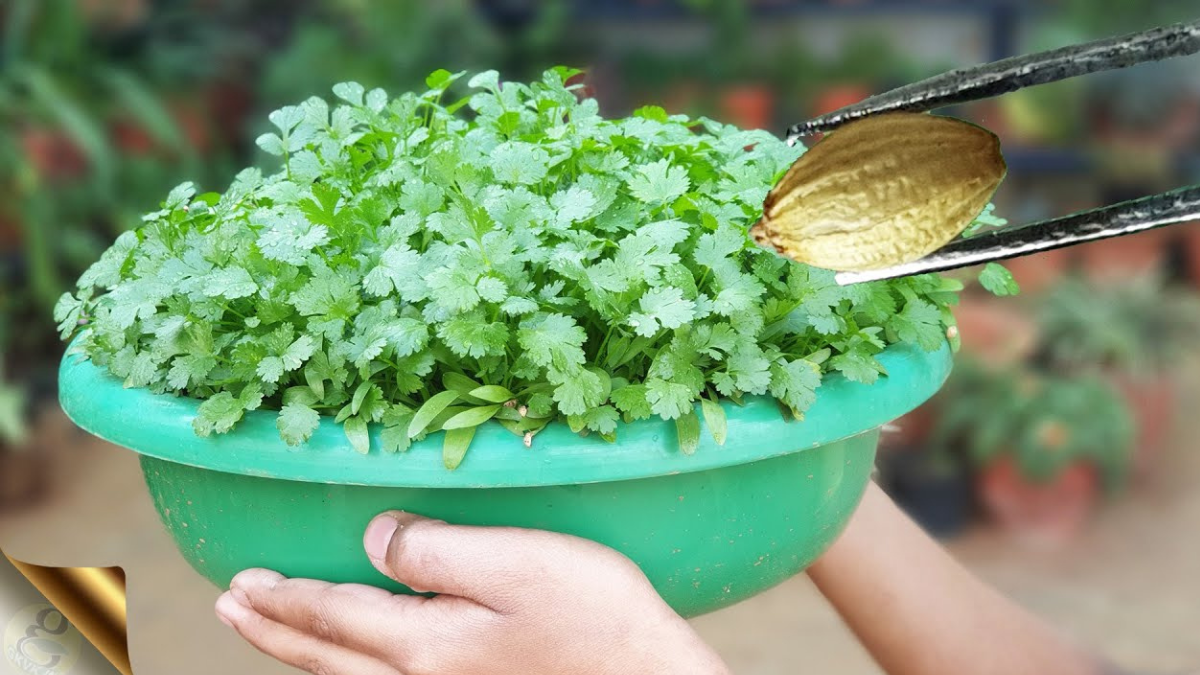How to Grow Herbs for Beginners: The Easy Guide To Planting Your Favorite Herbs At Home From Scratch
Growing coriander at home not only provides you with a convenient source of fresh herbs but also offers several other benefits. You have full control over the growing conditions, ensuring that no harmful pesticides or chemicals are used. Additionally, cultivating coriander can be a rewarding and fulfilling experience, allowing you to connect with nature and indulge in the joy of gardening.

2. Benefits of Growing Coriander at Home
There are numerous benefits to growing coriander at home:
- Freshness: Having coriander plants in your backyard or kitchen garden ensures a constant supply of fresh leaves whenever you need them.
- Cost-effective: Buying coriander from the grocery store can be expensive, especially if you frequently use it in your cooking. Growing it at home saves you money in the long run.
- Organic and Chemical-Free: By growing coriander yourself, you can avoid using harmful pesticides and chemicals, ensuring a healthier and more natural product.
- Convenience: No more last-minute trips to the store when you run out of coriander. You can simply harvest it from your own plants whenever needed.
- Flavorful Leaves: Homegrown coriander leaves often have a more intense flavor compared to store-bought ones, enhancing the taste of your dishes.
3. Getting Started: Choosing the Right Varieties of Coriander
Before starting your coriander-growing journey, it’s essential to choose the right variety. There are two common types of coriander: slow-bolt and quick-bolt. Slow-bolt varieties are better suited for home cultivation as they take longer to produce seeds, allowing you to enjoy the leaves for a more extended period. Some popular slow-bolt coriander varieties include Santo, Calypso, and Leisure.
4. Selecting the Perfect Location
Coriander thrives in well-drained soil and requires ample sunlight. Choose a location in your garden or balcony that receives at least 4-6 hours of direct sunlight each day. Ensure that the area has good air circulation to prevent fungal diseases.
5. Preparing the Soil for Coriander Planting
Coriander grows best in loamy soil that is rich in organic matter. Prepare the soil by removing any weeds, rocks, or debris. Add compost or well-rotted manure to improve the soil’s fertility and drainage. It’s recommended to perform a soil test to check the pH level. Coriander prefers a slightly acidic to neutral pH range of 6.2-6.8.
6. Sowing Coriander Seeds
Coriander can be directly sown in the ground or in containers. If planting in containers, choose pots that are at least 8-10 inches deep to accommodate the long taproot. Sow the seeds about half an inch deep and 2 inches apart. Water the soil gently after sowing, ensuring it remains moist but not waterlogged.
7. Watering and Moisture Requirements
Coriander plants require consistent moisture to thrive. Water the plants regularly, ensuring the soil remains evenly moist. However, be cautious not to overwater, as excessive moisture can lead to root rot. Mulching around the plants can help retain moisture and suppress weed growth.
8. Providing Adequate Sunlight
As mentioned earlier, coriander requires a minimum of 4-6 hours of direct sunlight each day. If you’re growing it indoors, place the pots near a south-facing window or use grow lights to provide sufficient light. Insufficient sunlight may result in leggy and weak plants.
9. Taking Care of Coriander Seedlings
Once the coriander seeds germinate and seedlings emerge, thin them to maintain a spacing of 6-8 inches between plants. Thinning ensures proper airflow and reduces competition for nutrients. Regularly inspect the seedlings for any signs of pests or diseases and take appropriate measures if needed.
10. Fertilizing the Coriander Plants
Coriander plants benefit from a balanced fertilizer application during their growth. Apply a slow-release organic fertilizer or a balanced liquid fertilizer every four to six weeks. Be careful not to over-fertilize, as excessive nitrogen can lead to excessive leaf growth and reduced flavor.
11. Managing Pests and Diseases
Coriander plants are generally resistant to pests and diseases. However, occasional issues like aphids, caterpillars, or fungal infections may arise. Inspect your plants regularly and take prompt action at the first sign of infestation. Use organic pest control methods or insecticidal soaps to minimize damage.
12. Harvesting Coriander Leaves
Coriander leaves can be harvested when they are young and tender, usually around 3-4 weeks after sowing. Snip off the outer leaves, leaving the inner ones to continue growing. Regular harvesting promotes bushier growth and prolongs the harvest period. Remember to harvest before the plants bolt and produce flowers, as the leaves tend to become bitter at that stage.
13. Storing and Preserving Coriander
To store coriander leaves, wash them thoroughly, pat them dry, and place them in airtight containers or ziplock bags. Alternatively, you can freeze the leaves by chopping them finely and storing them in ice cube trays filled with water. This method allows you to easily grab a cube or two whenever you need coriander in your recipes.
14. Cooking with Homegrown Coriander
Homegrown coriander leaves are incredibly versatile and can enhance the flavors of numerous dishes. They are commonly used in curries, soups, salads, salsas, chutneys, and marinades. Experiment with different cuisines and recipes to explore the full potential of this aromatic herb.

15. Conclusion
Growing coriander at home is a rewarding experience that offers fresh and flavorful leaves for your culinary endeavors. By following the steps outlined in this article, you can successfully cultivate coriander in your garden or even in containers. Enjoy the convenience, taste, and satisfaction of having your own abundant supply of this vibrant herb.


